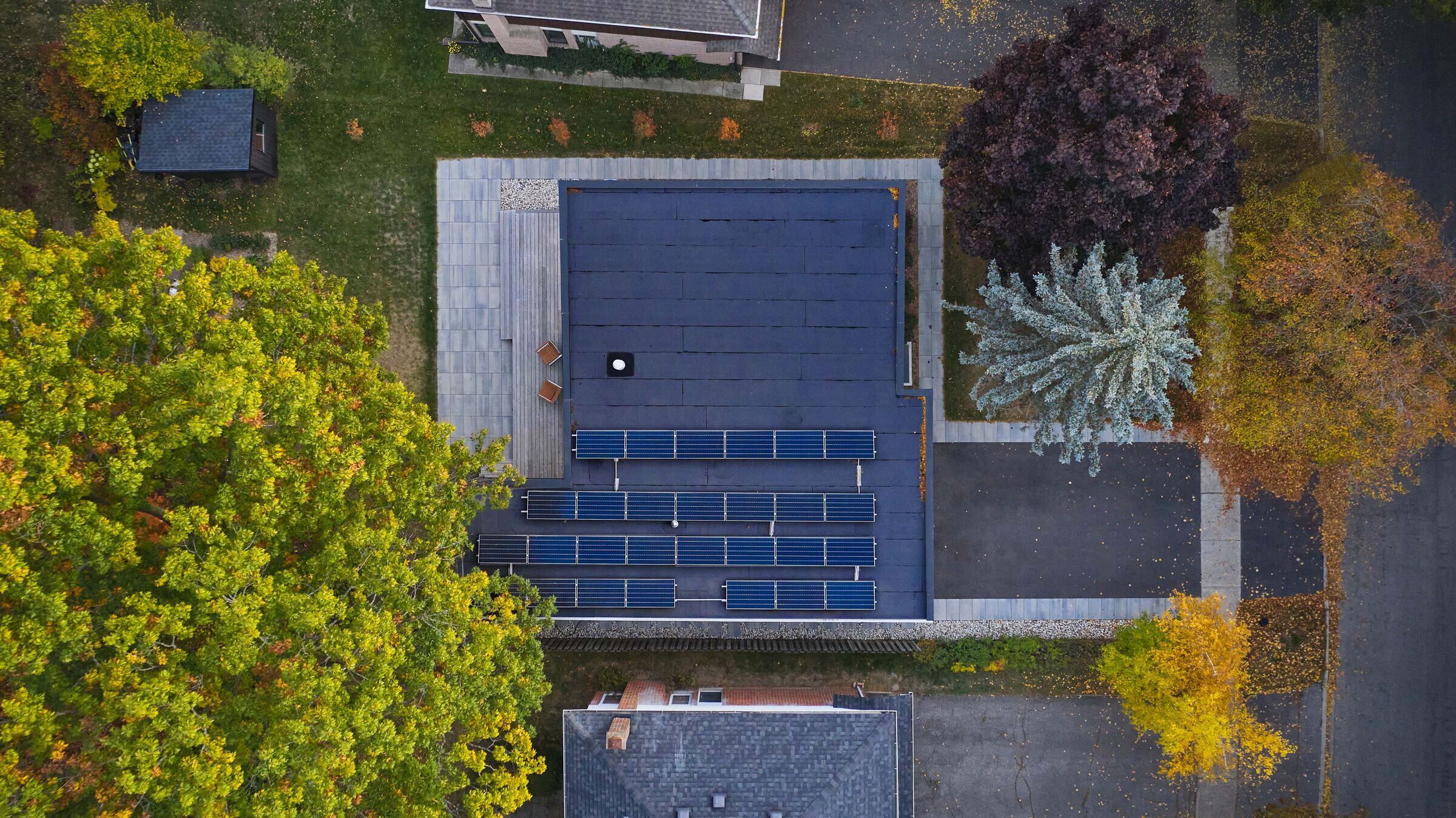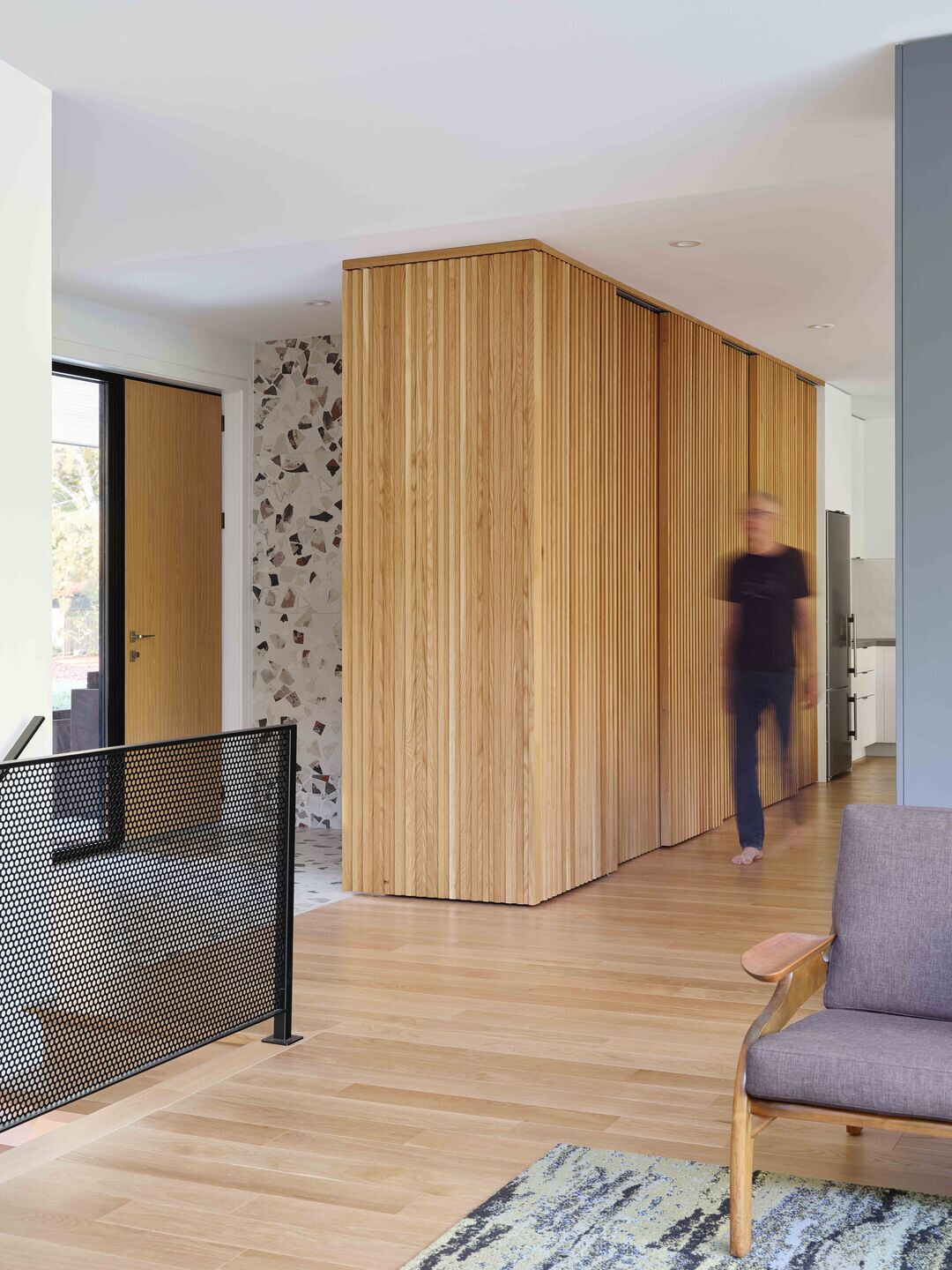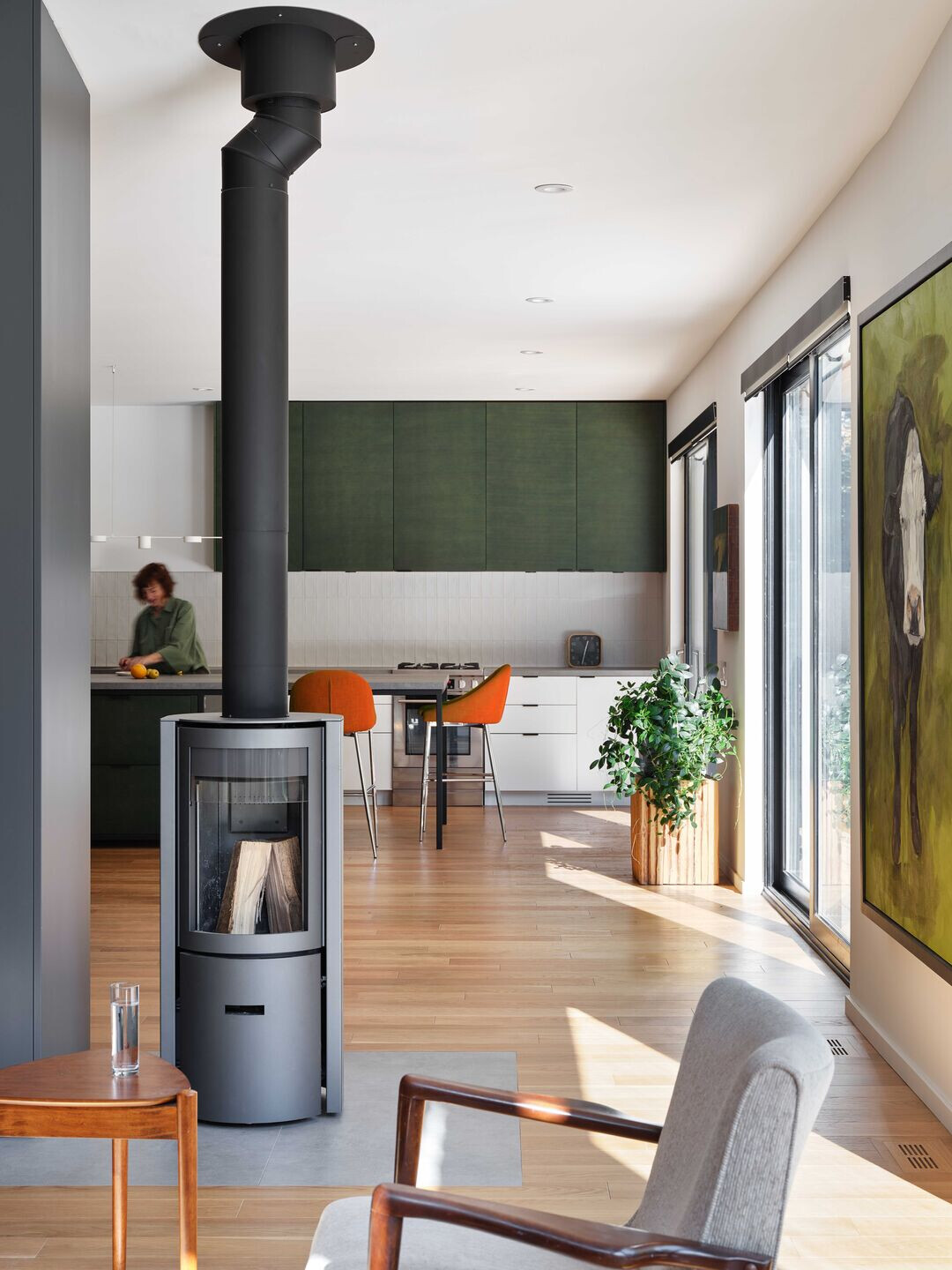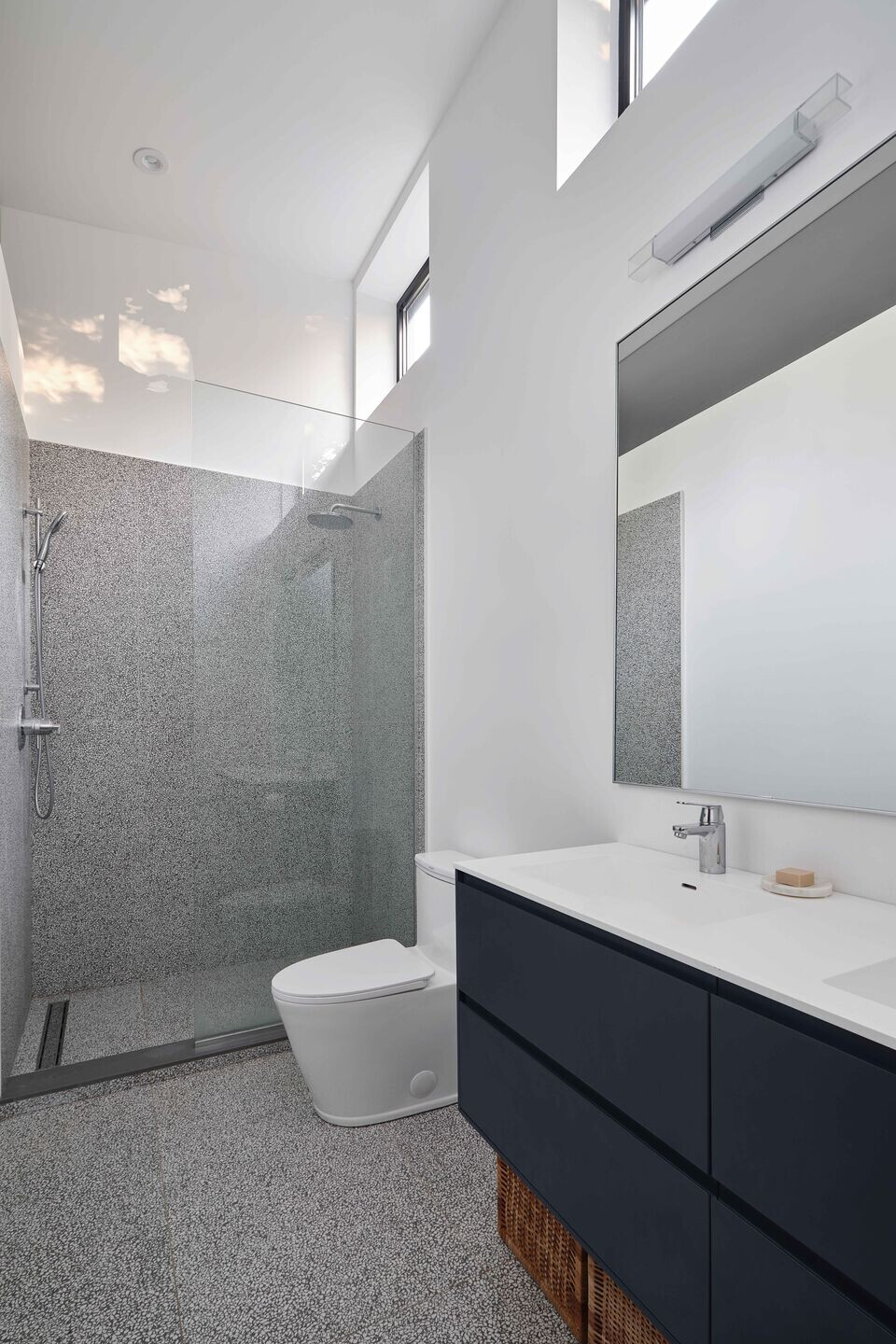It takes a caterpillar about a few weeks to morph into a better version of itself. And although the Caterpillar House project took longer, the process of transforming a suburban house into a contemporary, sensitive, and responsive family home proved to be relatively similar.


The idea of transformation was embraced when the existing house could no longer serve its intended purpose; the shell was reimagined as a modern, energy-efficient frame with light-filled interior spaces, creating a home for a family of five at the edge of a woodlot. The original house's footprint was kept, but the new form offered a better usage of space for flow and daylight, and the hip roof became instead a low-slung flat roof, which gracefully bends and rises towards the south, like one-half of a butterfly wing. It sits on a quiet suburban street in Clarkson Village, with marshlands nearby—a refuge for many species of wildlife, including plants, birds, and amphibians.


The house was purchased for its proximity to the surrounding conservation trails and the 30m (or 98ft) tall trees. Still, the existing house refrained from connecting to the landscape or providing a suitable layout for the owners' lifestyle. The new owners were looking to downsize, with the children almost all out of the house. They wanted an idyllic, environmentally friendly home to make the next chapter of their lives more comfortable: open, flowing spaces for the kids to visit and entertain friends, and with aging-in-place design such as the principal bedroom on the main floor. They were also concerned that they wouldn't be able to optimize the home's energy efficiency without adding air barriers, wrap-around sill plates, and all the other tricky places necessary to prevent heat loss. Post Architecture helped the owners navigate the various options for energy efficiency design, mechanical systems, layout, and size, to suit their budget and needs. The result of this collaboration is a one-story bungalow, on the foundation of the former house, with improved technologies, daylight access, and surpassing in style. The project also aimed to minimize the scope of waste through demolition by maintaining the existing poured concrete foundation walls, which were in good condition. The foundation walls shaped the new home, connecting the past with the next generation.



The new house sits seamlessly within its context on the quiet, tree-lined street, sensitive to the surroundings. Approaching the house from the front, it is difficult to see where the dark charred-wood cladding of the exterior ends, as it appears to morph into the cedar trees on the property. The former garage, which used to be the most prominent corner of the house, is now a courtyard with perforated metal screening, allowing light to dapple through and become an inviting front courtyard space to sit and watch the neighbourhood kids play on the street. The flat roof starts low and conventional on the north side of the house but turns into a sloped shed roof midway, getting taller towards the south so that more east/west-facing sun could enter the interiors. Moreover, the flat portion of the roof allows for a 9kW photovoltaic solar array to offset hydro bills by 50% and supply clean energy to the grid.



The interior of the Caterpillar House features warm white oak floors set against dark green stained oak cabinets and a palette of warm ochres and sand colours. The main floor layout is organized with the entertaining spaces facing the ravine trails to the rear of the property, and the Primary Bedroom and Ensuite as the most street-prominent volume of the house. On this property, there was more privacy towards the leafy street than towards the public trails bordering the rear yard. Upon entering the front door, guests are drawn towards the living room by the expansive exterior views and upper clerestories. This room, in turn, flows into the dining room, on either side of a millwork unit and rotating Stûv stove. Beyond the dining room is a generous kitchen with a concealed pantry behind slatted sliding panels. The kitchen opens onto its covered deck, with perforated metal privacy screens so one can sit unobserved in the open setting. The principal bedroom faces the front with a modestly-sized window obscured by a large maple and spruce tree, taking advantage of the quiet suburban street. The lower level features three additional bedrooms, the laundry, and a rec room for when the out of-town guests stay over.
From design to the end of construction in 2021, the two year-long chrysalis-like process delivered this family's evolved, sensitive, and contemporary new home.
















































